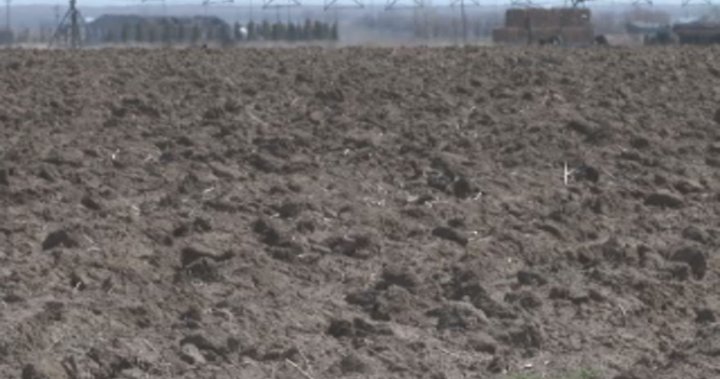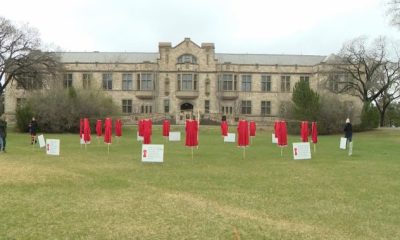General News
Alberta farmers adapting to province’s growing drought concerns – Lethbridge

Allison Davie is a farmer just south of Taber, Alta., and her farm, North Paddock Farms, is facing a unique challenge this year with water restrictions.
“It’s definitely a lot of extra planning that’s going into it. A lot of extra mental strain and stress that’s going to go into this year, not knowing exactly how much rain we’re going to get and planning around the eight inches of water,” Davie said.
“On our farm we grow a lot of potatoes, and potatoes require a lot of water. We’re looking at eight inches of water allocation this year. In a typical potato crop would require at least 18 inches.”
Meanwhile, dry-land farmers like Dave Bishop are approaching this season with a bit less strain.
“We’re pretty well status quo right now. We don’t have any specialty crops, so if we do get those eight inches and a normal rainfall, we’re going to be fine.”

Water restrictions mean farmers will be allowed less than half of their usual allotted amount — a challenge never heard of until now.
The email you need for the day’s
top news stories from Canada and around the world.
“Water like this is unprecedented. In my history on my farm we’ve never done anything like this, we’ve never gone out and tried to shuffle water around on our own farm and try to find water in other places to the extent that we’re doing this year,” Davie said.
“We have never seen single-digit water allotments.”
Even dry-land farmers like Bishop know they’re not out of the woods yet.
“It’s tough on those guys that need that extra water for their specialty crops. Myself, we’re fine,” said Bishop.
“The only issue we might have is if we get restricted more or if we get no rainfall, then the eight inches we’re allocated will not be enough.”
Davie has come up with alternative measures to ensure that crops can still grow.
“We’re looking at this year shuffling acres around on our farm. Potentially moving acres in from other spots, talking with neighbours, things like that. People that won’t be using their full allocation and we’re going to try to use it on our farm,” said Davie.
“This year we’re planting the same amount of Timothy as last year, but the difference is that we’re only going to cut it once. We’re not going to irrigate it again after July. The potatoes, we had a great crop out there last year, so because we have a few extras we will be cutting them back this year.”

The difference this year is Mother Nature, with both dry and specialty crops producers looking to the sky for the answer, knowing the final say is not theirs.
“We could end up with half the crop, two-thirds the crop, we don’t know,” said Bishop.
“And that’s the unknown, and that’s just — it’s farming. There’s always an unknown with the weather.”
© 2024 Global News, a division of Corus Entertainment Inc.
Source
Disclaimer: No copyright infringement intended. All rights and credits reserved to respective owner(s).























